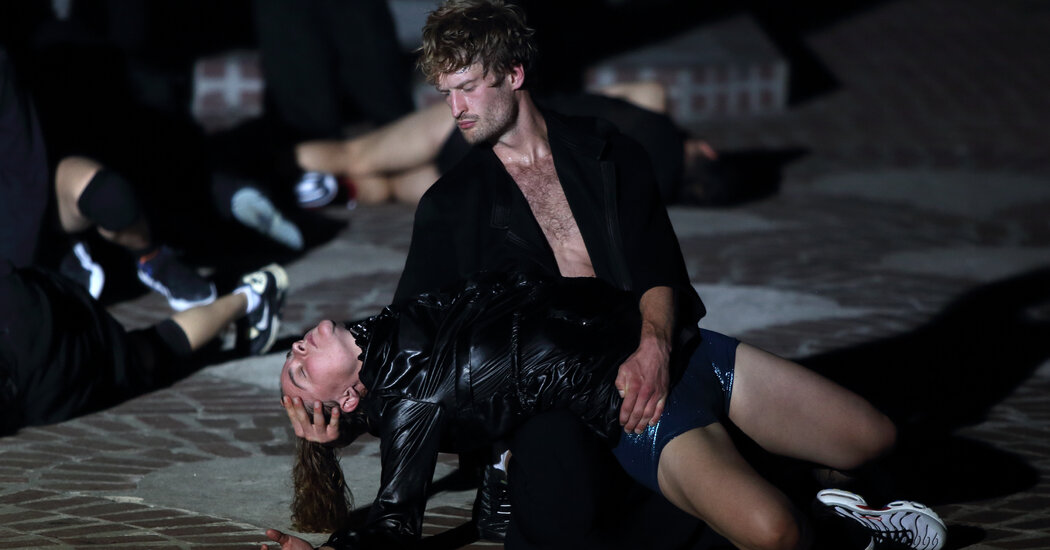In Part 3, they move in silence, mouths stretched wide open and heads tilted back, circling the church’s pulpit on their knees, miming or silently mouthing something to the audience. They might be refugees, with no language to offer their stories, or perhaps silenced victims of abuse.
Until this point, Charmatz maintains a certain amount of dramatic tension, despite longueurs. But in the fourth section, the dancers start to talk to audience members, then pull some into the performance space to form a circle in the near-dark. Nothing much happens for a long time, as performers circle around the periphery of the space and push through the audience, declaiming various non sequiturs, lines of poetry (“No man is an island”) and abrasive song (“What else is in the Teaches of Peaches? Like sex on the beaches”), or writhe wildly close by.
Here, it was striking to note the difference between the kind of amused complicity that Bausch evokes when her dancers address people in the audience, and the frequently aggressive, confrontational nature of the actions in “Liberté Cathédrale.”
The final section, dominated by a huge, layered, swelling organ sound (played by Phill Niblock) was strongest, with a tight-knit group pushing and pulling closely against one another like a single struggling organism. Sometimes dancers are slung across shoulders, sometimes balanced on backs in images evoking war, death, refugee migrations. Eventually they are carried or dragged away, until just one woman remains, balancing precariously on one leg as sound and lights are suddenly extinguished.
The dancers do an extraordinary job with the demanding material, and Charmatz has clearly given them freedom to explore physical ideas and push themselves to extremes. But he hasn’t mastered the outcome as he did in an earlier work, the much tighter “10,000 Gestures,” which featured similarly controlled chaos of a large group of dancers on individual and intersecting tracks.
“Liberté Cathédrale” will tour, but it’s hard to imagine it will have the same impact without the extraordinary soaring space of Mariendom. Ultimately, it’s much closer to the site-specific installations that Charmatz has created over his career than to the theatrical pieces that made Tanztheater Wuppertal famous. Will he bridge the gap? Establish a new aesthetic? “Liberté Cathédrale” doesn’t tell us yet.
Liberté Cathédrale
Through Saturday at the Mariendom Church in Neviges, Germany.


